Nestled amidst the breathtaking Annapurna region of Nepal lies a pristine and relatively undiscovered trekking trail leading you to the untouched beauty of Mardi Himal. This trail, previously uncharted by explorers, offers an unforgettable journey to an altitude of 4,500 meters above sea level.
Hidden Gem of the Annapurna Region: Mardi Himal Base Camp Trek
Mardi Himal, often referred to as the "virgin Himalayas," remained untouched by trekkers for a long time due to its remote location, wild terrain, lack of proper trails, and limited accommodation options.
But times have changed. Today, the Mardi Himal trail has gained popularity among both local and international trekkers. Its easy accessibility, relatively short duration, and stunning panoramic views of the Annapurna mountain range make it a sought-after trekking destination.
Thanks to the joint efforts of local communities, the government, and Nepal's tourism board, the trail has been transformed. It now boasts well-maintained trekking paths, rest stops, informative notice boards, and an ample number of tea houses and lodges. Mardi Himal is no longer a remote and challenging trekking experience.
The myth of trekkers going missing on the Mardi Himal trail has been dispelled, and it's now a safe and accessible destination for adventure seekers.
The Short Mardi Himal Base Camp Trek offers a sacred journey to the base camp of Mardi Himal at 4,500 meters. This trail presents multiple options for trekkers, including extensions to Annapurna Base Camp, the Ghorepani-Poonhill trek, and the Ghorepani-Ghandruk trek via Landruk.
As you embark on this adventure, you'll traverse lush meadows and enchanting forests teeming with diverse flora and fauna. The trail rewards you with breathtaking vistas of Mt. Annapurna (8,091m/26,546ft), Machhapuchre (6,997m/22,957ft), Hiuchuli, Gangapurna, Mardi Himal (5,587m/18,330ft), and more.
The Short Mardi Himal Trek is an excellent choice for those seeking to explore the Annapurna region within a limited timeframe. It's also perfect for those who want to experience the thrill of reaching an altitude of 4,500 meters at the Mardi Himal Base Camp, where you can relish awe-inspiring 360° panoramic views of the Himalayas.
Places Nepal offers various alternative trekking routes in the Annapurna region. If you're looking for a more leisurely trek suitable for families, including children and senior citizens, the Mardi Himal Base Camp Trek is an ideal alternative. It allows you to experience the wonders of this pristine region at your own pace, surrounded by loved ones.
Explore the hidden jewels of the Annapurna area on the Mardi Himal Base Camp Trek for an amazing journey in the heart of the Himalayas.
The Mardi Himal Trek offers a captivating journey into the Himalayas of Nepal, taking trekkers to an altitude of 4,500 meters. This adventure usually commences in Pokhara, known as the gateway to the Annapurna Base Camp. Since Mardi Himal lies within the Annapurna Himalayan range, reaching Pokhara is the starting point for your Mardi Himal journey.
Mardi Himal Trek Difficulty
Mardi Himal is considered a moderate trek that can be completed in about 4-5 days from Pokhara. However, for beginners, this may be a bit challenging and demanding. If your fitness level is average, a more comfortable 8-9 day trek is recommended. In truth, the difficulty of the Mardi Himal Trek depends on the number of days you wish to allocate to this adventure via the Pokhara route.
Mardi Himal Trekking Route
The Mardi Himal Trek begins in Pokhara and leads you to Kade or Phedi, which is just a 40-minute drive from Pokhara. As you ascend to the Australian Camp, you can savor lunch while gazing at majestic Himalayan views and the distant city. Continuing through the forest, you'll reach Pothana, a charming village with welcoming hotels and lodges.
Pothana serves as the entry point to the Annapurna Conservation Area, where you'll need to validate your permits before heading to Pitam Deurali. Pitam Deurali is a favored overnight stop for trekkers. You'll then proceed to Forest Camp and Low Camp, passing through alpine, oak, and rhododendron forests for your overnight stay.
The following day, you'll hike uphill, rewarded with splendid Himalayan views, farmlands, valleys, and more, until you reach High Camp. High Camp marks your last overnight stop on the Mardi Himal Trek.
From High Camp, trekkers embark on an early journey to the Mardi Himal Base Camp, where the top viewpoint offers a breathtaking 360° panoramic view of the snow-covered Himalayas. After witnessing the sunrise, you'll descend to High Camp for breakfast and continue hiking to the Siding Village for your overnight stay. Siding Village is a Gurung settlement rich in rural cultural experiences. The next day, you can hike back to Pokhara or opt for a jeep ride.
While the Mardi Himal Trekking route is relatively easy, the specific overnight camps may vary depending on the trekking package you choose. For customized Mardi Himal Trekking route packages, don't hesitate to contact Places Nepal.
Understanding Mardi Himal Trek Packages
There are various Mardi Himal Trek Packages available, which can be tailored to suit different factors such as group size, age, fitness levels, time constraints, budget, and the starting point of your trek. To embark on the Mardi Himal Trek, trekkers first need to reach Pokhara from Kathmandu since Pokhara lacks an international airport. The trek can be completed in a minimum of 4 days, starting and ending in Pokhara. For a more relaxed and exploratory experience, a 7-day trek via Pokhara is recommended.
We suggest exploring two popular Mardi Himal Trekking Packages offered by Places Nepal: the Mardi Himal Trek 9 Days and the Mardi Himal Base Camp Trek. These packages can also be customized to align with your preferences.
Mardi Himal Trek Cost
Mardi Himal Trek, a short hike to the base of Mardi Himal, is a popular off-the-beaten-path adventure in the Annapurna region of Nepal. To embark on this trek, you'll need two permits: the TIMS Permit and the Annapurna Conservation Area Permit (ACAP).
The total cost of the Mardi Himal Trek, including all permits, accommodations, meals (breakfast, lunch, dinner), and a trekking guide, can be managed within a budget of approximately USD 400. However, the overall budget can vary depending on your starting point, whether it's Pokhara or Kathmandu, as well as the duration of the trek. For precise cost details, please contact Places Nepal.
Mardi Himal Trek Highlights
The Mardi Himal Trek offers an accessible and exotic destination for trekkers. This trail is relatively new, making it less traveled and perfect for adventurers seeking a unique experience. Amidst the journey, you'll encounter diverse flora, fauna, and communities.
The trail leads through dense forests of pine, oak, and rhododendrons, inhabited by wildlife like langurs, leopards, and deer. As you traverse through quiet trails and villages, and observe local lifestyles, you'll be captivated by the experience. The newly opened trail also provides opportunities for homestays in local ethnic villages.
Heading north, you'll encounter less vegetation but breathtaking views of the Himalayas, villages, landscapes, forests, and distant cities. The trek culminates at the Mardi Himal Base Camp, situated at an altitude of 4,500 meters, offering a 360° panoramic view of the entire Annapurna Himalayan range. During the winter months, trekkers may even witness snowfall, adding to the enchantment of the journey.
Permits for Mardi Himal Trekking
Trekking in Nepal requires proper permits, and the same holds for the Mardi Himal Trek. A commonly required permit is the TIMS Permit, applicable to all trekking regions in Nepal. However, additional permits may be needed depending on the specific region.
For the Mardi Himal Trek, you'll need the Annapurna Conservation Area Permit (ACAP) in addition to the TIMS Permit. The TIMS Permit costs NPR 1,000 (USD 10) when obtained through a registered company or NPR 2,000 (USD 20) for independent trekkers. The ACAP Permit costs NPR 3,000 (USD 30). Both permits are mandatory and valid for single entry throughout the Annapurna region.
Set out on the Mardi Himal Trek and immerse yourself in this fascinating adventure through the Himalayas' heart. For a memorable journey, explore the unexplored splendor of Mardi Himal.

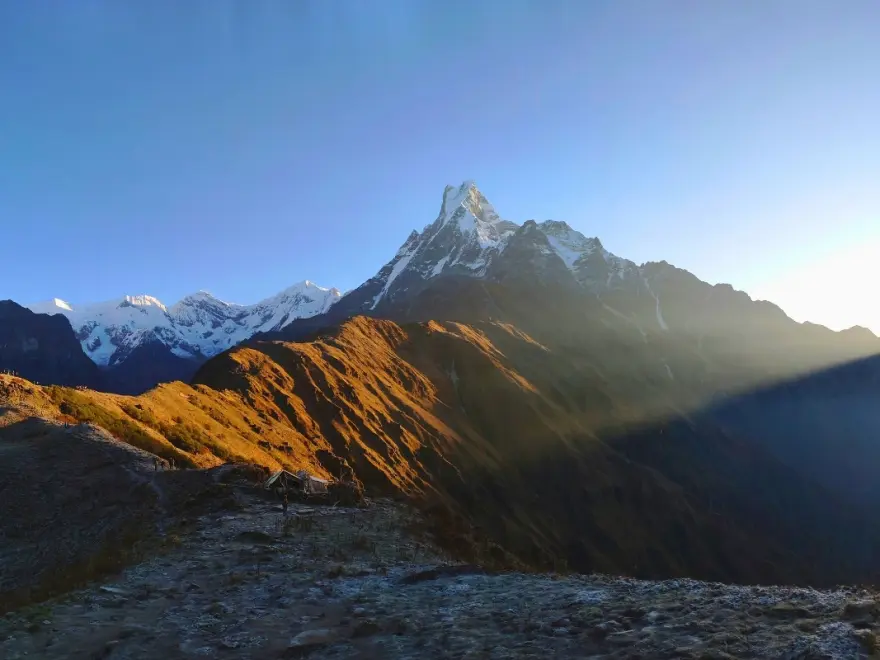
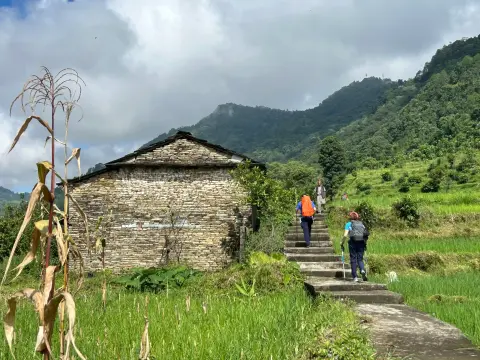
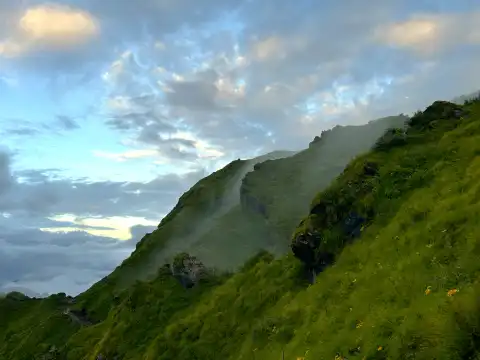
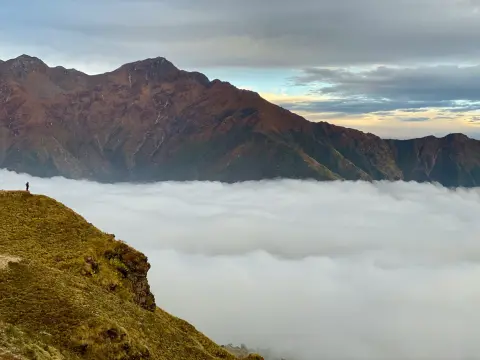
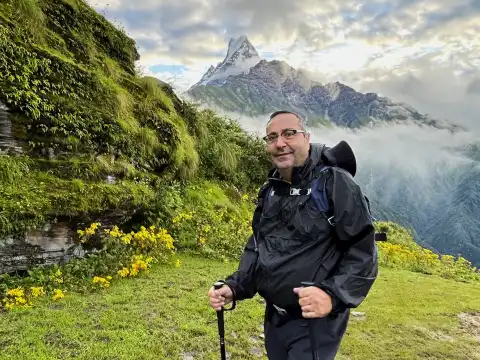







 General FAQs
General FAQs  Mardi Himal Trek Difficulty
Mardi Himal Trek Difficulty -webp.webp) Mardi Himal Trek Permits
Mardi Himal Trek Permits  Mardi Himal Trek Guide
Mardi Himal Trek Guide  Mardi Himal Trek Cost
Mardi Himal Trek Cost -webp.webp) Booking and Cancellation
Booking and Cancellation  Health and Safety
Health and Safety  Packing and Prep
Packing and Prep 




















































